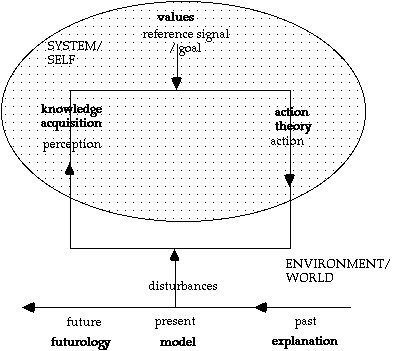

![]()
Adaptive capacity is the capacity of a system to adapt if the environment where the system exists is changing. It is applied to e.g., ecological systems and human social systems.
As applied to ecological systems, the adaptive capacity is determined by:
As applied to human social systems, the adaptive capacity is determined by:
Adaptive capacity is associated with r and K selection strategies in ecology and with a movement from explosive positive feedback to sustainable negative feedback loops in social systems and technologies.
The Resilience Alliance, as illustrated by the work of C. S. Holling and L. H. Gunderson [on the adaptive cycle], shows how the logistic curve of the r phase positive feedback, becoming replaced by the K negative feedback strategy is an important part of adaptive capacity. The r strategy is associated with situations of low complexity, high resilience, and growing potential. K strategies are associated with situations of high complexity, high potential and high resilience, but if the perturbations exceed certain limits, adaptive capacity may be exceeded and the system collapses into another so-called Omega state, of low potential, low complexity and low resilience.
![]()
![]()
Behavioral Mereology supplies a first step towards formalizing a notion of autopoiesis. Informally, a system is autopoietic if its behavior enables it to persist within its environment. In other words: it behaves to ensure compatibility with its environment. ...
Consider again our rabbit. It is autopoietic within its ecological niche, foraging for food, sheltering from the elements, and fleeing from prey: in particular, it responds to environmental changes (such as the seasons, or the appearance of a fox), and it changes the environment (by building a burrow), to improve its chances of survival. Similar things can be said of the societies of rabbits and foxes. For instance, in our simple example, the foxes collectively must symbiotically ensure that there are at least some rabbits, in order that they do not starve. ...
These ideas extend to numerous familiar examples of adaptive or living systems, from single cells to corporations and political parties. In each case, the distinguishing feature seems to be the same: the autopoietic system can anticipate and respond to external fluctuations (‘perception’), and can act in order to bring about sustainable states of affairs (‘action’). This is evocative of the Good Regulator theorem of Conant and Ashby: if we consider input-output machines, with ‘good regulation’ meaning to minimize surprising outputs, then any good regulator of a machine must be in isomorphism with said machine.
Considering again our ecosystem—the parts of which include rabbits and foxes—we conjecture that an autopoietic part A is one which contains an internal model: a subpart that sits in isomorphism with the environment E. In order to ensure compatibility between A and E, A must behave to maintain this isomorphism, and this entails the aforementioned perception and action.
![]() Behavioral Mereology, posted by John Baez
Behavioral Mereology, posted by John Baez

Please Note: This site meshes with the long pre-existing Principia Cybernetica website (PCw). Parts of this site links to parts of PCw. Because PCw was created long ago and by other people, we used web annotations to add links from parts of PCw to this site and to add notes to PCw pages. To be able to see those links and notes, create a free Hypothes.is↗ account, log in and search for "user:CEStoicism".
